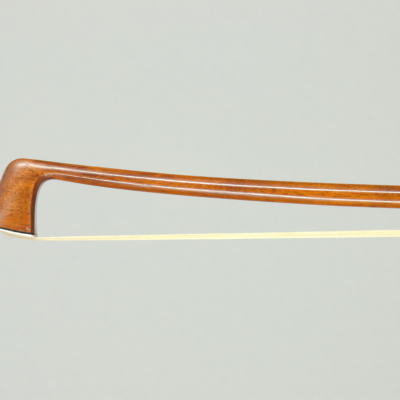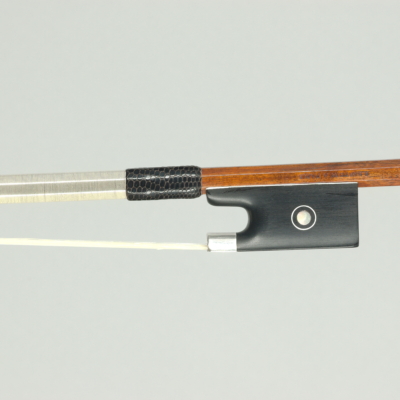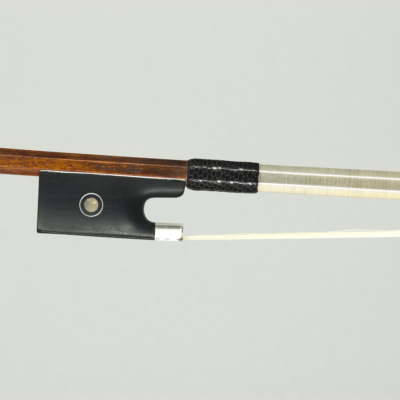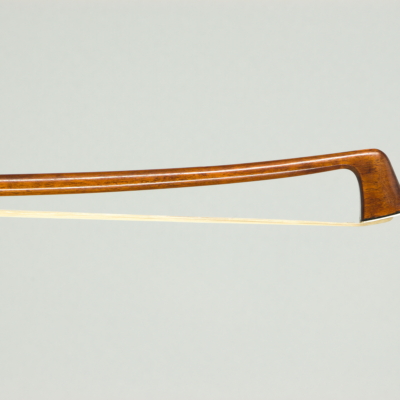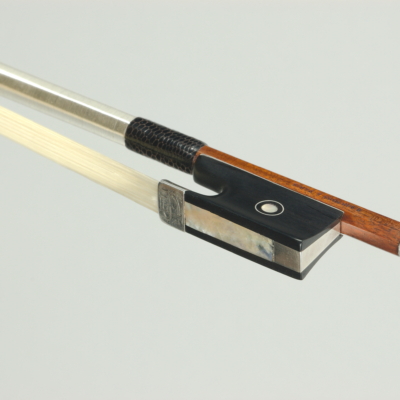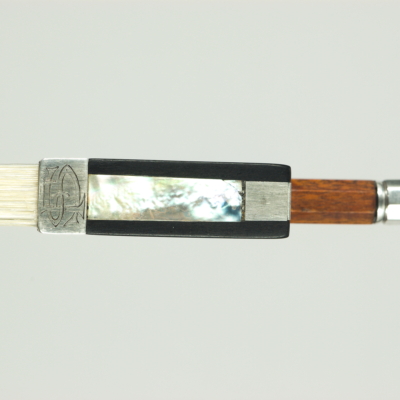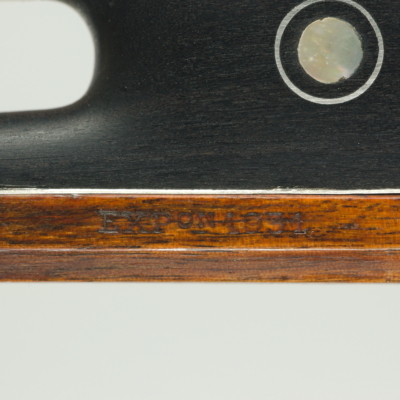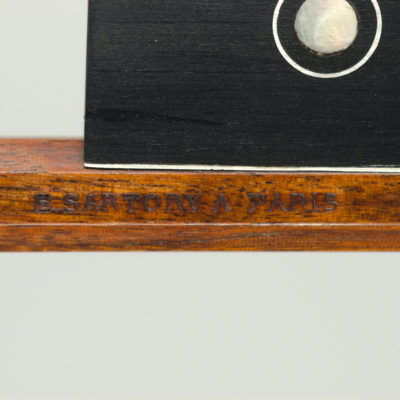Eugéne Sartory, Paris 1931

Eugène Nicolas Sartory (22 September 1871, Mirecourt – 5 March 1946, Paris) was an influential French archetier/bow maker. After having first apprenticed with his father, he went on to work in Paris for Charles Peccatte and Joseph Alfred Lamy before setting up his own shop in 1889.
The apex of the trend toward heavy, strong bows was exemplified in the output of Eugène Sartory, who developed a style of bow to which his atelier adhered consistently for decades. He fortified the Voirin model, producing sturdily built bows with strong shafts. Later on Sartory innovated the design of his bows; widening the head and altering the shaft cross-section as well as thickening the shaft above the handle. The sticks are often octagonal, especially after 1930. These changes provided more stability and reliability in the handling. In his early period, Sartory preferred dark pernambuco wood, whereas the later bows are generally of lighter color.
Vigneron and Fétique produced bows that at times could rival a Sartory in terms of strength and handling, but the consistency of Sartory bows has made them a perennial favorite among musicians even if they lack some of the subtlety of older bows. Sartory bows are utterly reliable as playing tools and will satisfy a wide variety of players. One of Sartory’s first patrons was the Belgian violin virtuoso Eugène Ysaÿe. As his success grew and his production was outstripped by high demand, Sartory employed other makers to assist him, including Louis Morizot (perè), Jules Fétique& Louis Gillet. Hermann Wilhelm Prell worked for Sartory in Paris between 1897 and 1898.
This fine violin bow was made especially for the l’Exposition Coloniale de Paris en 1931. The inscription EXPon 1931 is also branded on the stick, on the opposite side from the usual original brand E.SARTORY A PARIS. There is an engraved monogramme “FS” on the lower side of the ferrule, probably of a former owner we do not know. All parts of the bow are original, except the winding and thumb leather. The origin is confirmed is a certificate by the Cabinet d’Archetiers Experts: Jean-Franc;ois RAFFIN, Yannick LE CANU, Sylvain BIGOT.
The round stick is of first class pernambuco wood. Its beautiful texture and reflexion are excellent. The frog is of ebony with Parisian eye. The mounting is of silver. The button is of one piece. Length: 746 mm, weigth: 60,0 g. The condition is pure except minor fillings on the frog at the underslide.


Jungmannova 749/32
110 00, Praha 1
Česká republika

